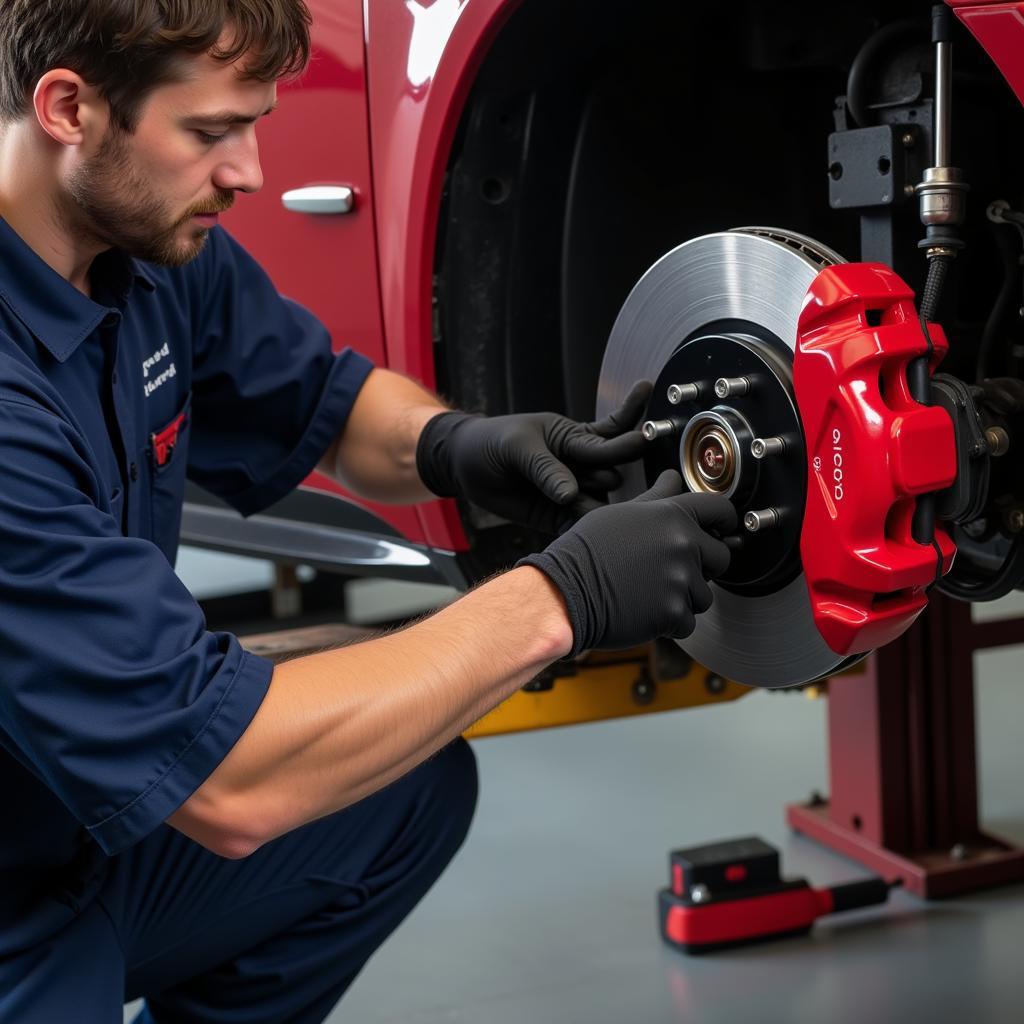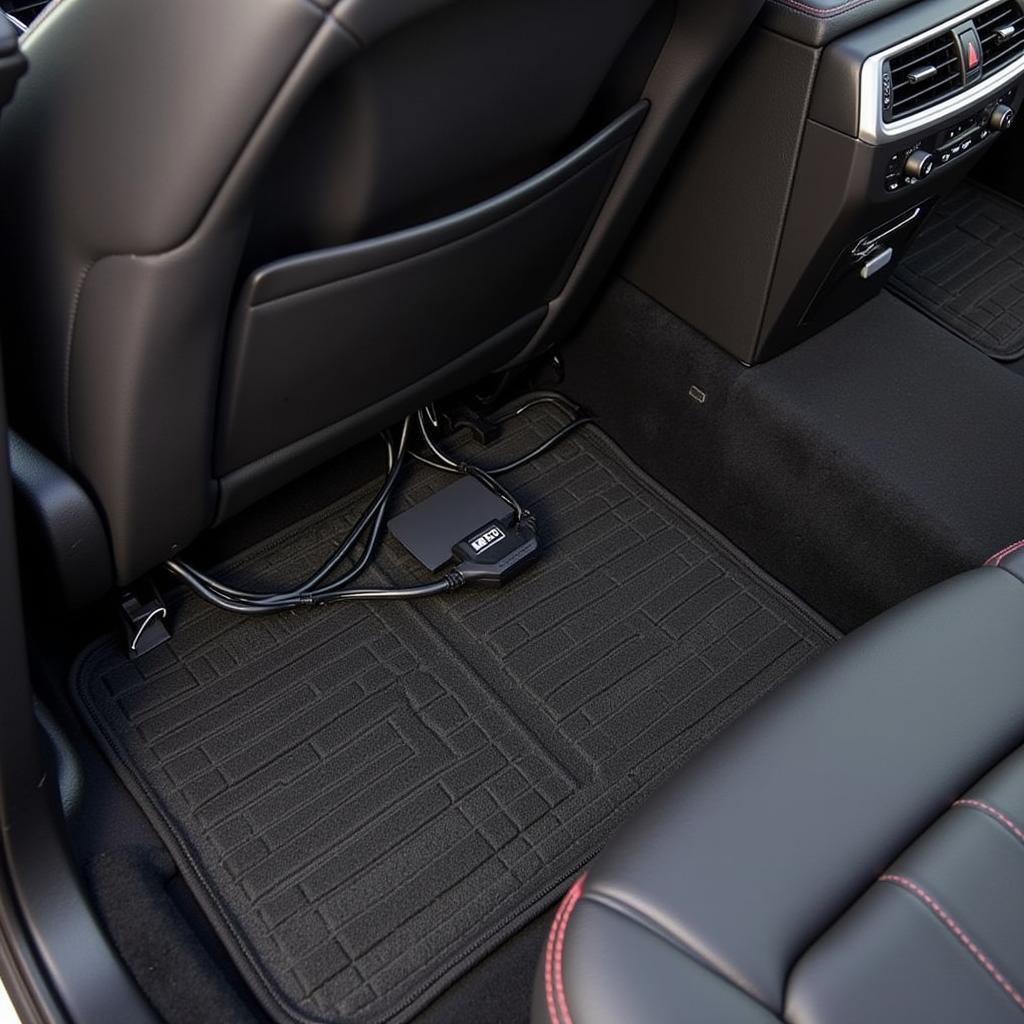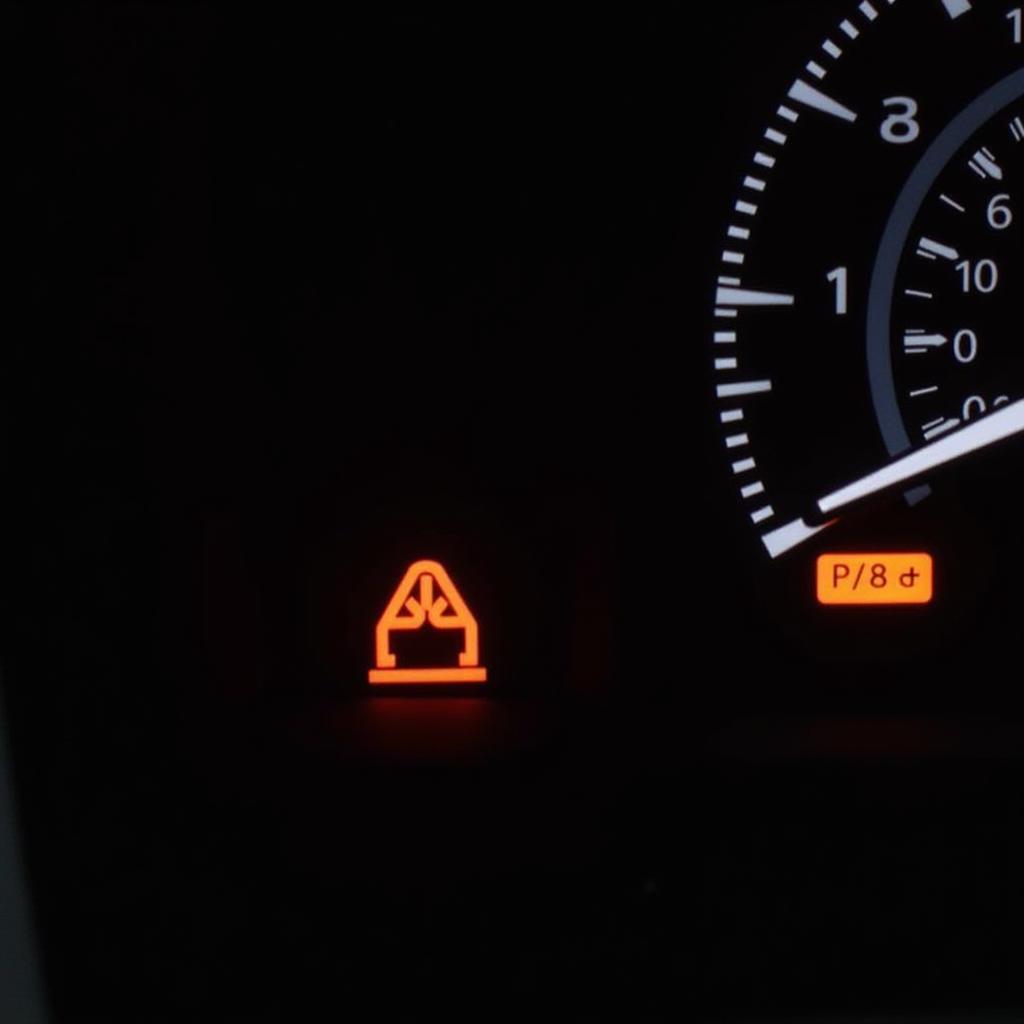The Alfa Romeo 4C is a car designed for performance and driving pleasure. However, like any high-performance vehicle, it requires regular maintenance to stay in top condition. One crucial aspect of this is keeping an eye on your brakes. If you see the brake pad warning light illuminate on your dashboard, it’s a sign you shouldn’t ignore. This article delves into the reasons behind the Alfa 4C brake pad warning light, how to diagnose the issue, and potential solutions.
Understanding the Alfa 4C Brake Pad Warning Light
The brake pad warning light, often represented by a circle with an exclamation mark inside and surrounded by parentheses, is your car’s way of telling you it’s time to pay attention to your brake system. This light is directly linked to your brake pad wear sensors.
These sensors are small metal tabs embedded within the brake pad material. As you use your brakes, the pads wear down. When the brake pad material reaches a critically low level, the wear sensor comes into contact with the brake rotor. This contact completes a circuit, triggering the warning light on your dashboard.
Diagnosing the Issue
Seeing the brake pad warning light doesn’t automatically mean your brake pads are completely worn out. It’s a signal to investigate further. Here’s a step-by-step guide:
-
Check Your Brake Pads: With the car safely parked and on level ground, inspect your brake pads through the spaces between the wheel spokes. You should be able to visually assess the amount of material remaining on the brake pads. If they look thin, it’s time for a closer inspection.
-
Consult Your Owner’s Manual: Your Alfa 4C owner’s manual provides valuable information specific to your vehicle model. Refer to it for guidance on acceptable brake pad thickness and recommended replacement intervals.
-
Seek Professional Help: If you’re unsure about the condition of your brake pads or lack the tools for a proper inspection, it’s always best to consult a qualified mechanic specializing in Alfa Romeo vehicles.
Potential Solutions: Addressing the Warning Light
Once you’ve identified the cause behind the illuminated brake pad warning light, you can take the appropriate action. Here are the most common scenarios:
1. Worn Brake Pads: If your inspection reveals significantly worn brake pads, it’s time for a replacement. Don’t delay this crucial maintenance task, as driving with worn brake pads drastically reduces your stopping power and compromises safety.
2. Faulty Wear Sensor: In some cases, the brake pad wear sensor itself might be malfunctioning, triggering the warning light prematurely. While replacing the sensor is an option, mechanics often recommend replacing the brake pads simultaneously, especially if they exhibit noticeable wear.
3. Other Brake System Issues: Though less common, the brake pad warning light could indicate other problems within the brake system, such as low brake fluid, air in the brake lines, or issues with the brake caliper. A comprehensive inspection by a qualified mechanic is essential to diagnose and address these issues accurately.
 Replacing Alfa 4C Brake Pads
Replacing Alfa 4C Brake Pads
The Importance of Timely Brake Maintenance
Your Alfa Romeo 4C’s braking system is paramount for your safety and that of others on the road. Addressing the brake pad warning light promptly is not just about maintaining your car’s performance but also about ensuring a safe driving experience. Ignoring the warning light can lead to:
-
Reduced Braking Performance: Worn brake pads significantly reduce your car’s ability to stop efficiently, increasing the distance required to come to a complete halt.
-
Damage to Brake Rotors: Driving with worn brake pads can cause damage to the brake rotors, leading to costly repairs or replacements.
-
Complete Brake Failure: In extreme cases, neglecting brake maintenance can result in complete brake failure, putting you and others in a perilous situation.
Conclusion: Prioritizing Your Safety and Performance
The Alfa 4C brake pad warning light serves as a crucial early warning system for your car’s braking system. Heeding this warning and addressing the underlying issue promptly ensures your Alfa Romeo 4C continues to deliver the exhilarating performance it’s known for while prioritizing your safety and that of others on the road. Remember, regular maintenance and timely repairs are essential investments in your safety and the longevity of your high-performance vehicle.
FAQs about Alfa 4C Brake Pad Warning Lights
1. How often should I replace my Alfa 4C brake pads?
Brake pad lifespan depends on your driving style and conditions. As a general guideline, inspecting your brake pads every 10,000 miles and replacing them between 20,000 to 70,000 miles is recommended. However, always consult your owner’s manual for model-specific recommendations.
2. Can I replace the brake pads on my Alfa 4C myself?
While possible, brake pad replacement is best left to qualified mechanics, especially for high-performance vehicles like the Alfa 4C. Brakes are a critical safety component, and professional installation ensures optimal performance and reliability.
3. What type of brake pads are recommended for the Alfa Romeo 4C?
Alfa Romeo recommends high-performance brake pads formulated to withstand the demands of spirited driving. Using inferior brake pads can compromise braking performance and safety.
4. What is the difference between ceramic and semi-metallic brake pads?
Ceramic brake pads offer superior stopping power, generate less brake dust, and last longer than semi-metallic pads. However, they are typically more expensive.
5. Why is my brake pedal pulsating when I apply the brakes?
A pulsating brake pedal often indicates warped brake rotors, often caused by excessive heat from braking hard or driving with worn brake pads.


